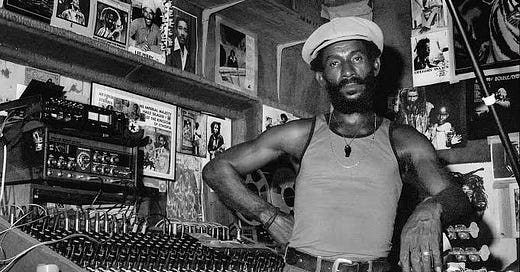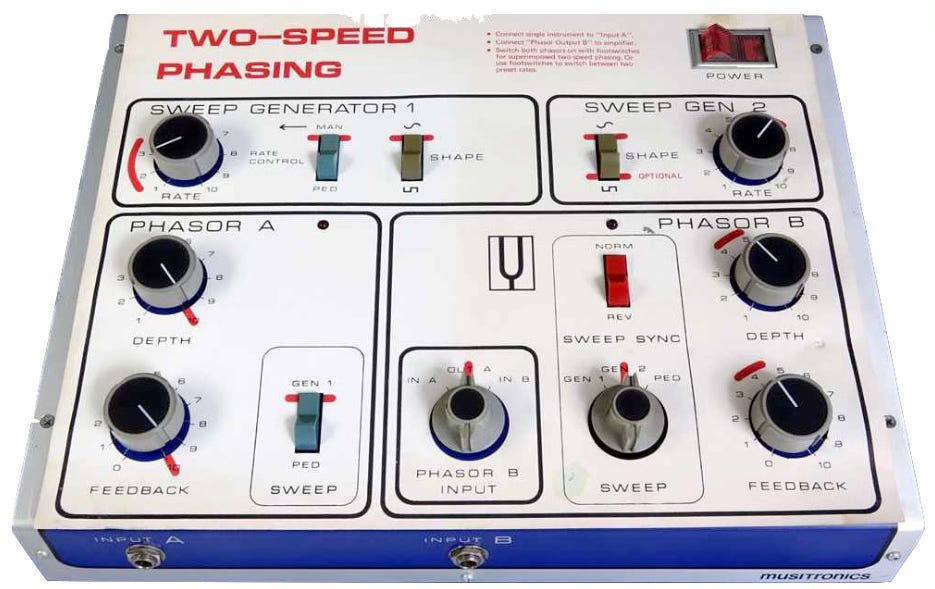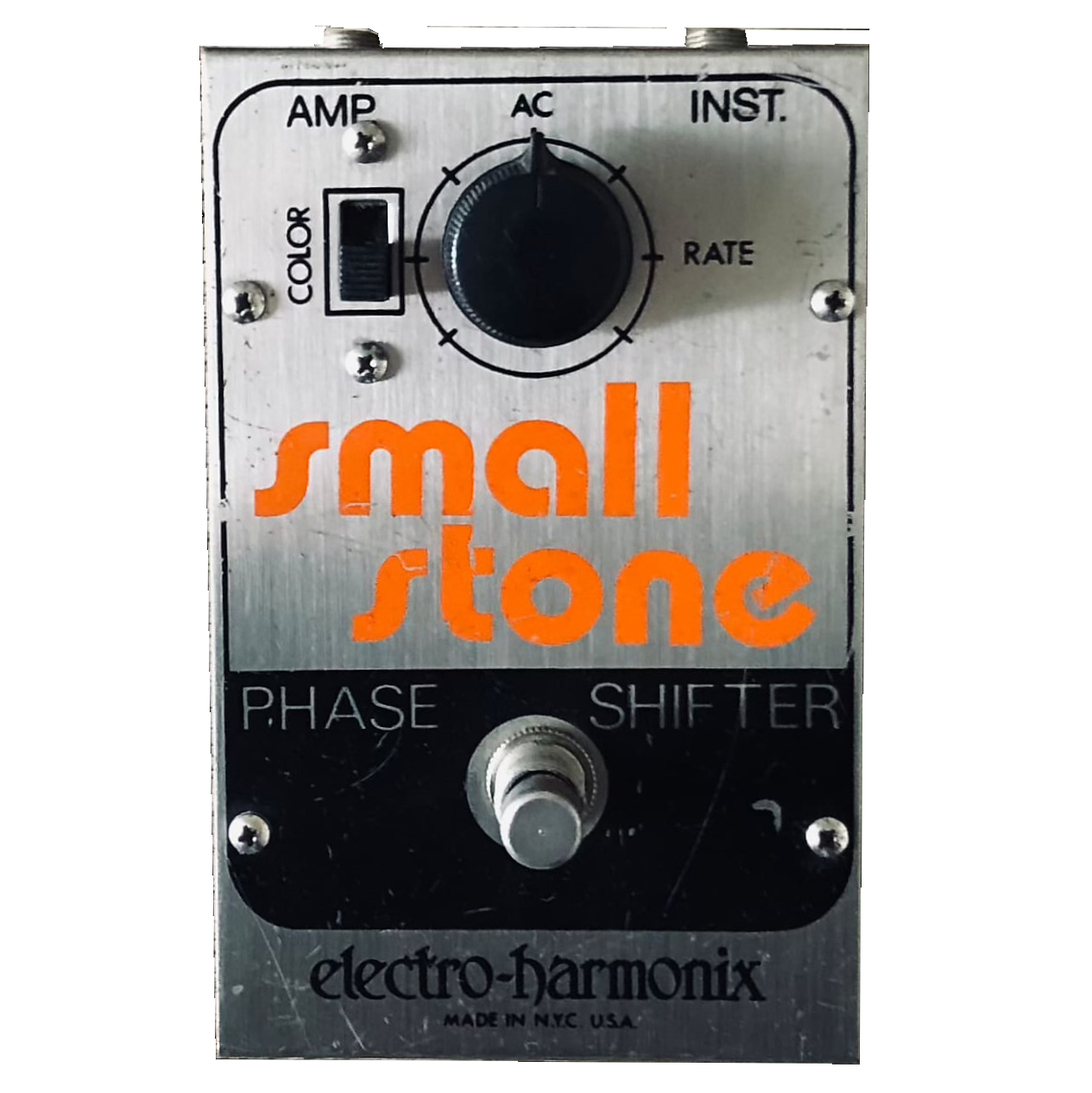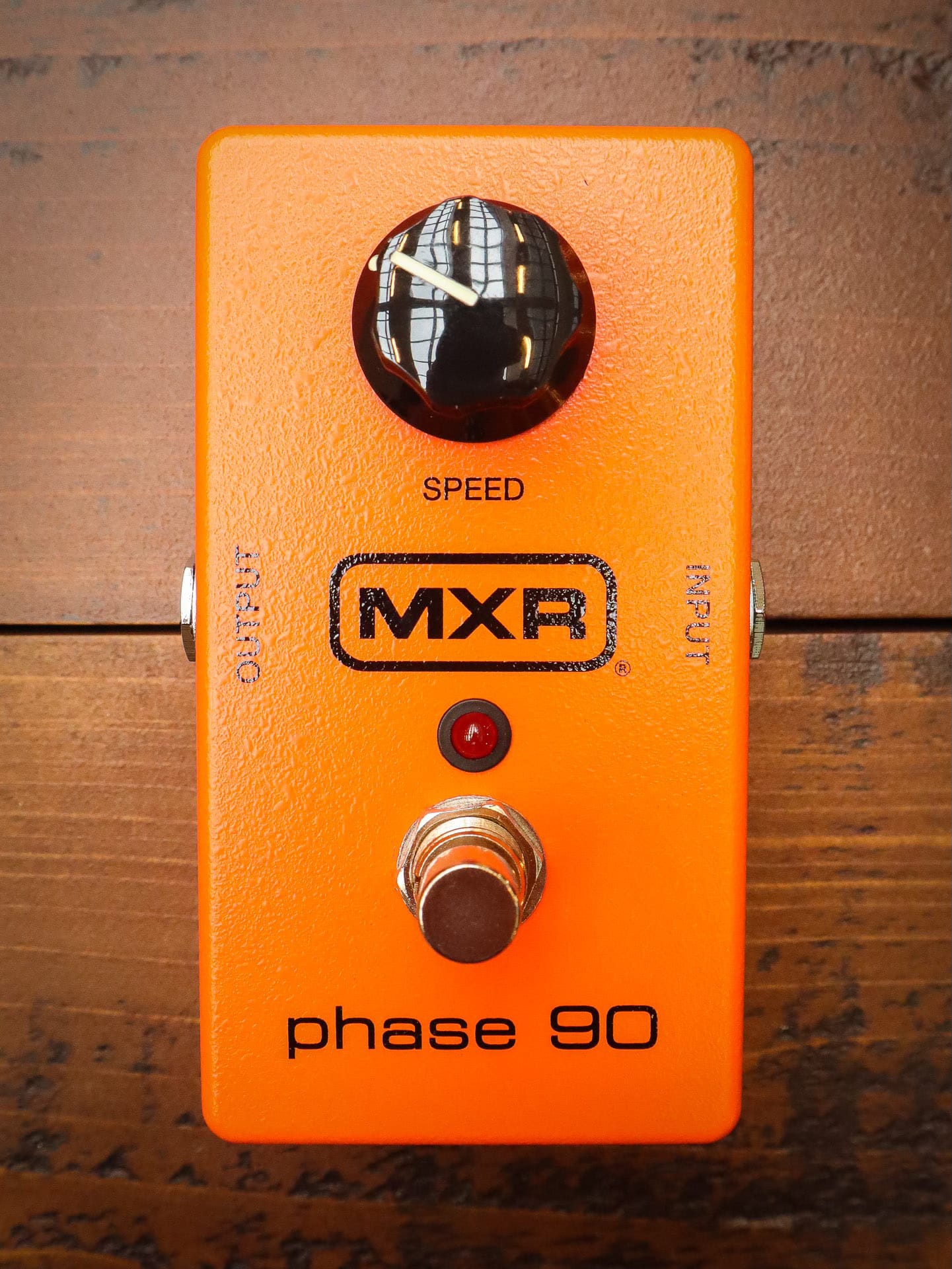Dub in Motion: The Phaser Effect and Its Legacy in Reggae
Exploring Vintage Gear, Modern Tools, and Legendary Tracks
While there’s no single officially documented “first reggae or dub song” to use the phaser effect, its earliest known use dates back to the early 1970s, right when dub was being invented and studio effects became a signature sound.
What is a Phaser?
A phaser is an audio effect that creates a sweeping, whooshing sound by splitting an audio signal into two paths, shifting the phase of one, and mixing them back together.
This creates notches in the frequency spectrum that move over time, producing the swirling, psychedelic sound often used in dub and reggae.
History & Overview
The phaser effect became popular in the late 1960s and exploded in the 1970s, especially in rock, funk, and reggae.
In reggae and dub, pioneers like King Tubby and Lee “Scratch” Perry used it to create trippy textures on drums, guitars, organs, vocals, and even full mixes.
It was part of the “live mix” approach, which involves using effects during playback to transform a basic track into a deep, hypnotic dub version.
How It Likely Started
The Mu-Tron Bi-Phase and other phasers became available in the early 1970s.
Jamaican producers like Tubby and Perry were already modifying gear and experimenting.
Studio gear was limited, so any new pedal or unit that could create movement or drama in a mix was used creatively and aggressively.
Phasing likely started as subtle FX on guitar or hi-hats and grew into a signature dub tool by 1975.
Early Reggae & Dub Tracks with Phaser Effects
"King Tubby Meets Rockers Uptown" – Augustus Pablo (1974)
Description: A seminal dub track showcasing King Tubby's innovative mixing techniques, with phaser effects applied to drums and melodica. Main Phaser Gear:
The exact model is unconfirmed but is widely believed to have been used.
Mu-Tron Bi-Phase
MXR Phase 90 or Phase 100
Possibly Electro-Harmonix Small Stone
Modifications:
Tubby modified nearly all studio gear—especially spring reverbs and delay lines. While no detailed schematic exists of phaser mods, he likely altered control voltage routing and feedback circuits for live mix control.
Unique Use:
Phasers often blended subtly into snares, rimshots, or full stereo bus during dub breakdowns.
Controlled via auxiliary sends from the mixing board—live performance style.
Often used subtle phasing on snares, hi-hats, or complete mix elements.
Tracks: “Dub From The Roots”, “King Tubby Meets The Rockers Uptown”
Technique: Phasing is often layered with reverb/delay for a spacey effect.
"Dub Revolution" – The Upsetters (1973)
I tried to locate the same phaser that Lee Perry is shown with in this video, this is a close as I could find. Main Phaser Gear:✅ Mu-Tron Bi-Phase
Confirmed from photos and studio reports.
Occasionally used:
Small Stone
Roland Jet Phaser (used more for distorted phase/fuzz guitar sounds)
Modifications:
Perry was a mad scientist with sound, but unlike Tubby, he often used gear as is—yet ran it through unusual signal paths.
Combined phaser with spring reverb, tape delays, and tape machine feedback loops for wild swirling results.
Unique Use:Applied phasing heavily to guitars, organs, background vocals, even full mix.
Description: Produced by Lee "Scratch" Perry, this track features phaser effects on guitar and organ, exemplifying Perry's experimental style.
Heavy user of Mu-Tron Bi-Phase at Black Ark.
Applied to rhythm guitar, keys, vocal delays, or full mix.
Tracks: “Dreadlocks In Moonlight”, “Disco Devil”
Known for blending phaser with spring reverb and tape delay.
Iconic Hardware Phaser Units (70s–80s)
1. Mu-Tron Bi-Phase
2 phasers in one unit, stereo or serial chaining.
Used by Lee "Scratch" Perry at the Black Ark studio.
Known for its deep, lush sweeps and CV (Control Voltage) inputs for foot pedal or LFO control.
Very rare and expensive now.
2. Electro-Harmonix Small Stone
Compact pedal unit.
Warm, rich phasing popular in many genres.
Used live and in studio.
3. MXR Phase 90 / Phase 100
Very popular in the 70s and 80s.
Simple controls with rich, smooth phasing.
Rumored to be used in Jamaican sessions due to its availability and ease of use.
🧰 Modern Plugin Emulations & VSTs
Here’s a list of high-quality phaser plugins (many emulate analog gear):
Premium Plugins
Soundtoys PhaseMistress – Emulates vintage analog phasers, tons of presets. Great for dub.
Arturia Phaser BI-TRON – Direct emulation of Mu-Tron Bi-Phase.
This is my go-to Phaser plugin for dub. An excellent emulation for classic sounds.
Free/Low-Cost Options
Blue Cat’s Phaser – Free, basic but solid.
Valhalla SpaceModulator – Free, weird and wild modulations.
Real-Life Example Setup
Classic Dub Guitar Chain:
Guitar → Wah Wah (sometimes) → Mu-Tron Bi-Phase
Then into: Spring Reverb → Tape Delay (RE-201) → Mixing Console Aux Return
In the DAW Today:
Guitar DI → Soundtoys PhaseMistress or Arturia BI-TRON
Add Valhalla VintageVerb (spring preset)
Then EchoBoy or a tape delay emulation
Classic Dub Hardware Signal Chain (1970s/80s Studio Style)
Guitar / Organ
↓
[Wah Pedal] (Optional for funkier tone)
↓
Mu-Tron Bi-Phase (or Small Stone / MXR Phase 90)
↓
Spring Reverb Unit (e.g., Grampian, Fisher Space Expander, Traynor)
↓
Tape Delay (e.g., Roland RE-201 Space Echo)
↓
Analog Mixing Console (e.g., MCI, Soundcraft)
↓
Send to AUX or Busses for FX feedback loop
In-the-Box (DAW) Dub Signal Chain
Guitar / Organ (Audio track or VST Instrument)
↓
[Insert FX Chain or Bus Send FX Chain]
↓
1. Phaser Plugin
→ e.g. Arturia BI-TRON, Soundtoys PhaseMistress, TAL-Phaser
↓
2. Spring Reverb Plugin
→ e.g. Valhalla VintageVerb (spring preset), PSP Nexcellence
↓
3. Tape Delay Plugin
→ e.g. EchoBoy, AudioThing Outer Space, UAD Galaxy Tape Echo
↓
4. Saturation / Tape Plugin (optional)
→ e.g. Softube Tape, Waves J37
↓
5. Output to Dub FX Bus or Group Track
↓
Manual Send Automation (fader rides during mix)
Real Use Example in a Dub Mix (DAW)
Organ bubble loop:
Add Soundtoys PhaseMistress with slow LFO rate
Add spring reverb (Valhalla VintageVerb, decay ~1.2s)
Add delay (EchoBoy synced to tempo or free-running for dub feel)
Automate the send level to the delay during mix for dropouts and echo trails
🧱 Tips for Realistic Dub Sound
EQ before phaser to roll off low-end
Use different LFO speeds to avoid phasing everything identically
Automate wet/dry blend to control intensityLayer reverb and delay on return channels for deeper feedback loops
Route returns back into mixer or bus for feedback dub









Seeing my band days were mid 70s early 90's the guitar players had all of the effects mentioned here so for me it was fun to try them on my Fender rhoads or Wulitzer electric pianos. I did end up with a electroharmonix at one point in a band whereI switched between keys and guitar,luckily I had a drummer who was better at amp and effects setting then I was for me getting the timing correct That was something that was always hard so it makes sense a drummer had a better time with it.
Now I'm more into home recording and happy that the plugins you listed are ones that I've had for a number of years now. Love dub and reggae since the 70s so in ending this rather long note knowing how noisy these units could be I do wonder how they dealt with that with their creative setups. Okay I love all the information you guys have on here yeah man.
You're welcome.I know they did sound great with those effects. Miss those 2 electrics went through 2 of each back in the day.